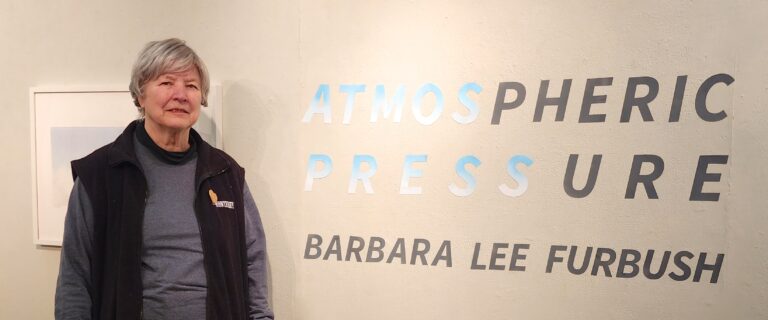The collection of three-dimensional works continues to grow through the generosity of numerous donors, Primarily composed of contemporary California works, there are additional examples from Asia and elsewhere that cover a wide variety of media.
The first sculpture work acquired by the college was the granite Panther, by Raymond Puccinelli (1904 – 1986). It occupies an outdoor site in the center of the Alisal St campus and was commissioned by the class of 1940 with the assistance of the WPA. After the opening of the current larger gallery space in 1977, other works joined the collection, most notably a group of works by John Haley from the John Haley Trust though the trustee, Gregory Ghent. In addition to these sculptural pieces the gift included drawings, paintings, prints and photographs. Collections of Japanese folk art assembled by Robert Skiles, Huichol artifacts from Mexico, Japanese blue and white porcelain and Mexican dance masks are now exhibited in rotating exhibitions, all from College holdings.

Jerome Kirk was born in Detroit in 1923. After serving ij World War II he received his B.S. in mechanical engineering from MIT in 1951. His works are held in many museum collections worldwide and 60 of his large scale public kinetic works occupy prominent public spaces throughout the US.
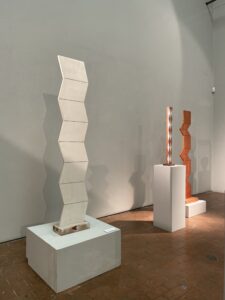
Installation view

Robert Butterbaugh
Speed Bird Turning Left
Cast bronze, c 1975
Gift of the estate of Richard W. Eyde
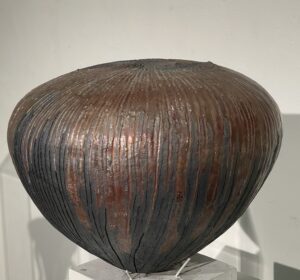
Pam Murakami, contemporary California
Raku Form, ca 2000
Gift of Gary Smith and David Ligare

This elegant vase, used for traditional Japanese art of flower arrangement, has handles with the shape of wisteria blossoms. Its name derives from Ikenobo, the oldest and largest school of Ikebana founded in the 15th century by the Buddhist monk Senno, and Shuin, meaning purple cloud.
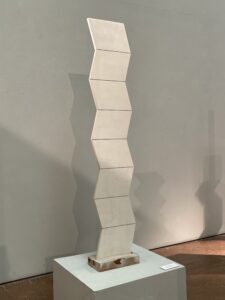
John Haley, (1905 – 1991), was a vital force in bringing modern European art concepts to California through his travels and early study with Hans Hoffman in Munich and Andre Lhote in Paris. In 1930 he began a 42-year teaching career at the University of California, Berkeley.
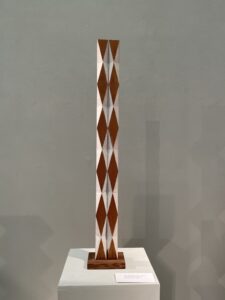
John Haley (1905 – 1991) Untitled, 1967, wood with white paint Gift of the John Haley Trust Gregory Ghent, Trustee

John Haley (1905 – 1991) Untitled, wood, ca 1975 Gift of the John Haley Trust Gregory Ghent, Trustee
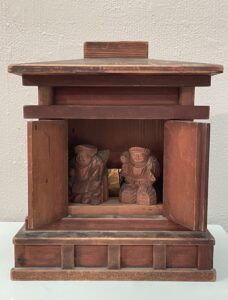
This is the central element of a Kamidana,
a miniature shine for home or workplace.
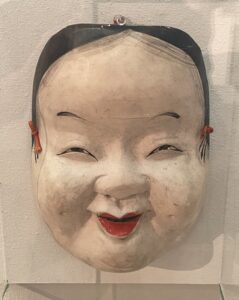
Okame is a favorite in Noh dramas today. She is said to derive from the Shinto deity, Ama no uzume, the goddess of mirth and good humor. According to a Japanese legend, the sun goddess, Amaterasu omikami, once hid herself in a cave, thereby plunging the world into darkness. The other gods tried in vain to lure her out and finally Ama no uzume performed such a sexually provocative dance that the assembled deities burst into laughter. This aroused the curiosity of Amaterasu, who came out of the cave, thus restoring daylight to the world. Source: British Museum, London



